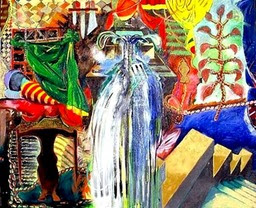THE SEVEN WONDERS OF SYDNEY
The Seven Wonders of Sydney is a video essay about parallel absurdities that bridge situations that were normal in their time, with what is now normal in ours, interrogating what may be historically dubious in both.
Here is a video trailer proposing two of them:
A third ancient Wonder was the C. Roy Mason furniture and appliance store, which occupied the space where the Cape Breton Centre for Craft and Design now stands. Mason specialized in attention-grabbing gimmicks and stunts to command attention. Marathons were a favoured tactic. Every few years a local keyboardist would play piano and electric organ (Mason sold both) in the front window for the duration of an entire weekend, Friday afternoon to Sunday night (Thursday and Friday were paydays and downtown was the main shopping district before the arrival of city-limits big box stores). Thousands of people thronged Charlotte Street. The piano man may as well have been David Blaine for the awe his ordeal inspired.
To top that shenanigan, one summer a touring stage hypnotist was engaged to hypnotically induce a young woman to sleep, Rip Van Winkle-like, in the window, in a premium deluxe bed, all weekend again. Crowds gathered in shifts day and night to watch her sleep, which was itself a surrealist performance. It opened up a new, temporary form of nightlife.
We know that hypnosis does not equal sleep, except on TV and in old movies. Shows like that one were smoke and mirrors. But what was real was Mason’s harnessing of what we now call the attention economy. Ballyhoo is as old as time. Something in people yearns to be fooled as well as beguiled. It is a mythic situation, in so far as a myth gives shape to a forever recurring stable pattern.
Some of the Wonders seem funny. A good way of being serious is a comic one. These are not the sort of wonders which epitomize human ingenuity and cooperation throughout the ages— the Pyramids, the Cathedrals, the Moon Landing. These are the ones that sprout in the shadows of major efforts. Not the Steel Plant, but the Tar Ponds. Not the neoclassical banks at the corner of Charlotte and Dorchester, but the shop that sold itching powder and firecrackers next door.
The underlying premise is that each generation finds marvels in the mundane. These things invariably disappear, preserved in memory and dreams. The best wonders are shared, and the very best are shared by many. They constitute a sort of memory-home.













